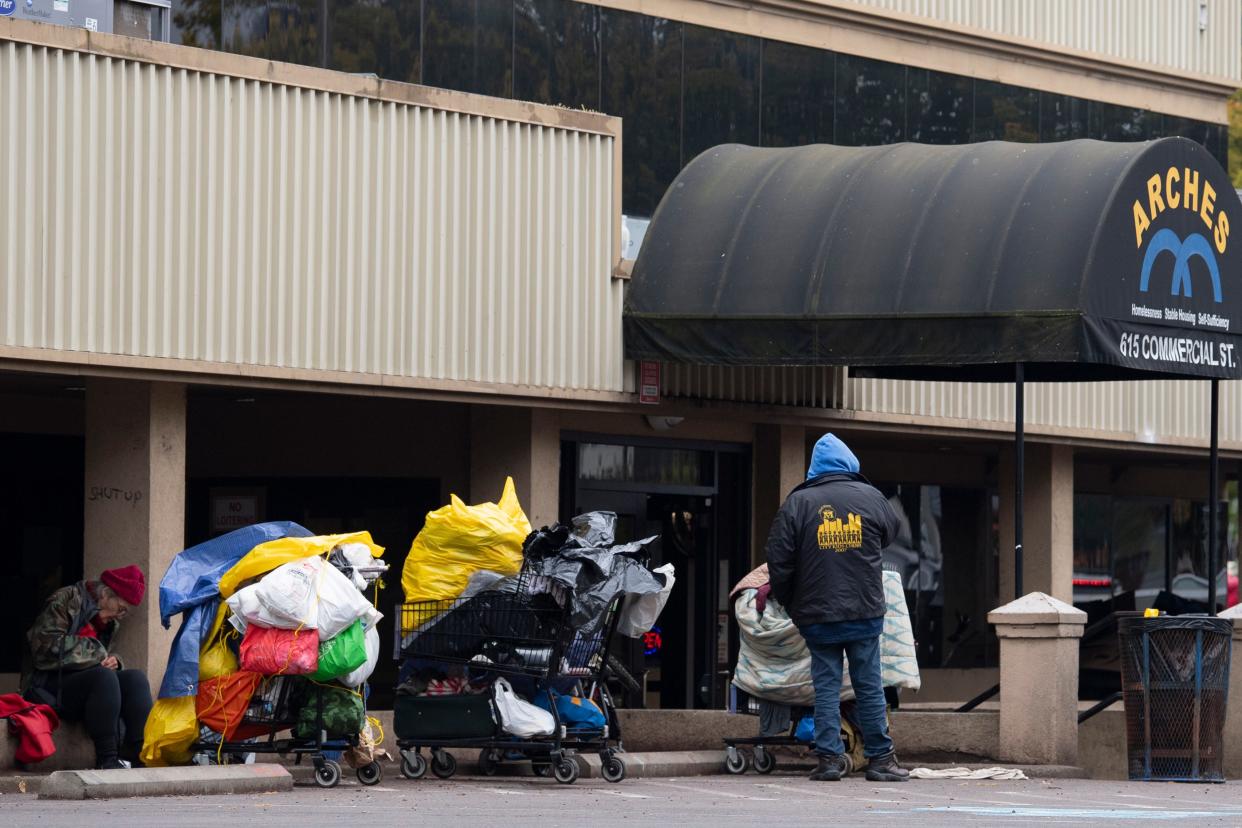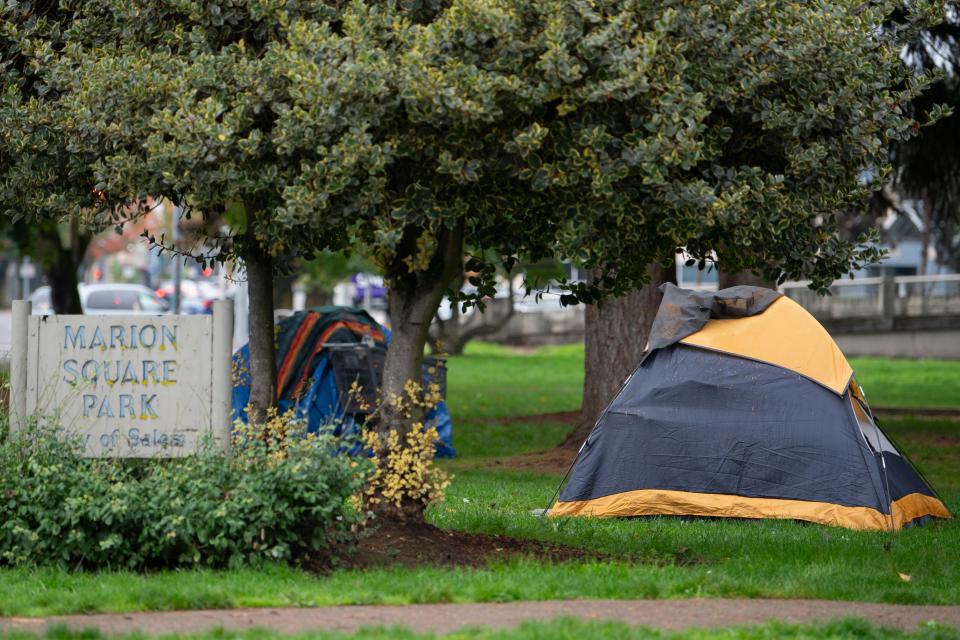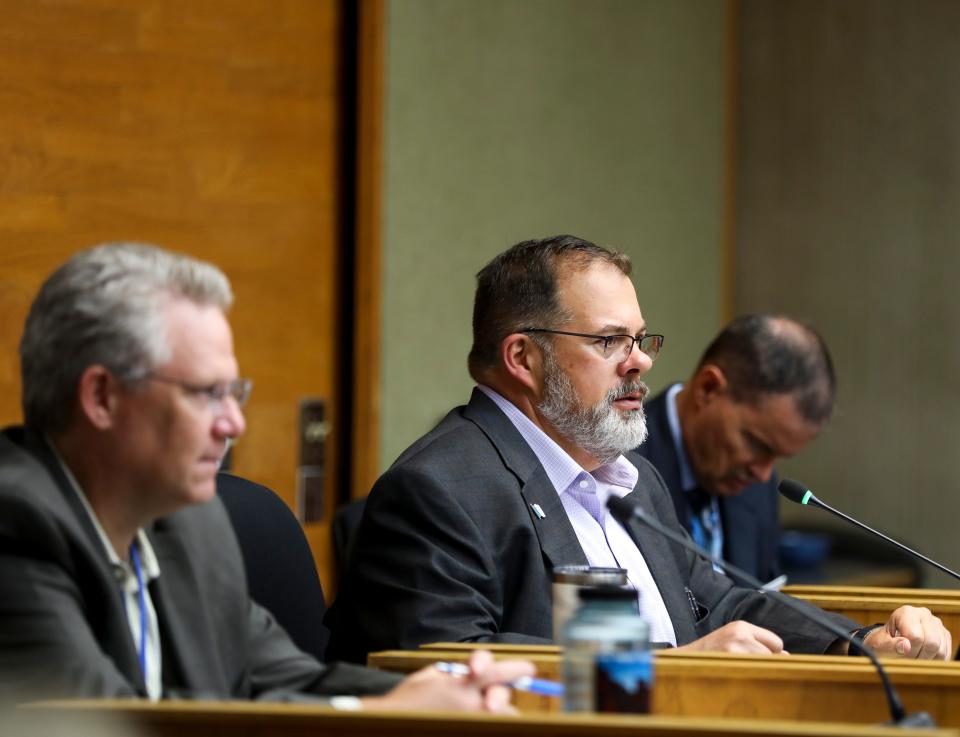Lack of funds hinders Salem Warming Network for homeless people ahead of forecasted freeze

A drastic cut in funding has left the Salem Warming Network for homeless people scrambling ahead of freezing temperatures forecasted for this weekend.
The National Weather Service issued a frost advisory and freeze watch ahead of the weekend. Lows are expected to hit 32 on Friday and Saturday nights.
In recent years, this meant about 150 beds a warming shelters would be available citywide for the hundreds of people living unsheltered. However, due to a sharp decrease in state funds, service providers are now left with about 30 emergency warming shelter beds.
The network is not a city-run program. It is managed by community organizations like the Mid-Willamette Valley Community Action Agency and relies on some city funds and state funds.
The team at the ARCHES Project plans to open its day center for a nighttime warming shelter with a capacity for about 30 to 40 people if temperatures dip to 32 or below. Crews will put two heated tents donated by the Department of Human Services in the facility's parking lot to provide additional shelter. Each tent will have sitting room for 30 people.

"This is a contingency plan only," said Jimmy Jones, executive director of the Mid-Willamette Valley Community Action Agency. "It's not a great plan, but in the absence of any other plan, it will at least get the job done."
Bathrooms will be an issue. Security will be an issue. Jones said without shelter, many of those living outside, who frequently have medical and mental health conditions, will get sicker in the cold.
"The weather is here," he said. "People are going to die outside if we don't provide some warming activity."
Where did the funding for warming shelters in Salem go?
Jones said the agency has been sounding the alarm to the state since June.
They knew with cuts to two Oregon Housing and Community Services funds tied to emergency shelters, they would not have the money to open enough warming locations when freezing temperatures hit, he said.
The city continues to contribute $150,000 a year to the warming network. When the volunteer stream for the warming network, who tended to be older and at a higher risk of COVID-19, dried up during the pandemic, providers used $1 million in mostly state funding to hire people to run the shelters, expand day center hours until the night shelters opened and provide transportation to people needing to get to the warming network.
The irony, Jones said, is that in recent years, more funds were available at the state level for homelessness, and more transitional and traditional shelter beds were available in the city. The state funds are not going toward the warming network in Salem, and unsheltered people who are most vulnerable and unable to use traditional shelters are the ones most likely to seek safe haven at a warming shelter.
In the past eight years, the warming network also has transitioned from only opening when temperatures of 27 degrees or lower were reached three nights in a row to activating every time temperatures dipped to 32 or below. This meant going from opening only a handful of times a season to 30 to 35 times a season. This required more resources and volunteers.

With American Rescue Plan Act funds gone and the state cutting the funding like the $10 million "Out of the Cold" grant, local organizations are now tasked with providing the same level of care with a fraction of the funds.
During Monday's Salem City Council meeting, Mayor Chris Hoy said for reasons unclear to him, the state redirected those funds to another program. He said he reached out to Gov. Tina Kotek to urge her to take action on funding the warming networks.
"We are trying very hard to get the state to redirect that money back to the warming network," Hoy said. "It's not just an issue here in Salem. It's an issue across the state for every community that runs a warming network."
Funding delay for warming shelters will cause suffering
Hoy told the Statesman Journal on Thursday that he's advocating for more funds and for groups to work together to address the immediate gaps.
"I don't want people dying on our streets," he said.
Hoy said he believes Kotek understands the urgency of the issue and is working to address it.
Officials with Oregon Housing and Community Services said $20 million was once made available to Community Action Agencies statewide for winter shelter investments.
"At OHCS, we know the need to shelter people during extremely cold weather is great," agency officials said in a statement. "That’s why when the state received one-time federal emergency funds during the pandemic, the agency directed some of those dollars to the Salem emergency warming network. That was one-time funding that we no longer have."
On Friday, Sen. Deb Patterson, D-Salem, said she had looked into the issue and found that shelter needs assessments for available funds would conclude at the end of this month and funds could be available mid-November. Because of the good reputation of the Mid-Willamette Valley Community Action Agency, Patterson said she was "cautiously optimistic" they would be receiving funds for the warming network.

Jones said that even if the funds are made available in the coming weeks, it would still take about 30 to 60 days to staff and supply the shelters. It'll be too late for the cold week and maybe too late for those living outside, he added.
"People are not going to die on the state's schedule," Jones said.
Ashley Hamilton, the Mid-Willamette Valley Community Action Agency chief program officer of housing and homelessness, said the delay in funding will cause suffering.
"These decisions should have been happening over the summer when we were trying to bring these issues to light," Hamilton said. "So in the meantime, the only people that are going to suffer as a result is our unsheltered community. Absolutely, it is fair for them to fear for their lives at this point."
The 2022 Point-in-Time Count found 1,805 people homeless in the Salem area.
One of the largest warming shelters in the city is at the Salem First Presbyterian Church at Chemeketa and Winter streets downtown. Michael Talbert, an ordained elder with the church, said during Monday's Salem City Council meeting that he is "deeply concerned" about whether Salem will be ready ahead of the winter to keep people warm and safe.
He said that the church typically provided about 60% of beds available during a warming network activation. The church reported serving 1,642 guests a season in a 2022/2023 report. Church staff said they have the capacity for 85 people and are usually full. They will be unable to open this weekend because ARCHES cannot provide enough staff.
"Last year, there was a death (of an unsheltered person outside) that was prominent," Talbert said. "Unless steps are taken immediately — we're talking about in a couple of weeks — we can start preparing for very bad news. Be forewarned: This is a serious problem."
Need help? Want to help?
Visit the ARCHES social media page at facebook.com/SalemARCHES/ or mwvcaa.galaxydigital.com/calendar/ to find information about volunteering or finding sheltering through the Salem Warming Network.
For questions, comments and news tips, email reporter Whitney Woodworth at wmwoodworth@statesmanjournal.com call 503-910-6616 or follow on Twitter at @wmwoodworth
This article originally appeared on Salem Statesman Journal: Funding cuts leave Salem warming centers scrambling before freeze

